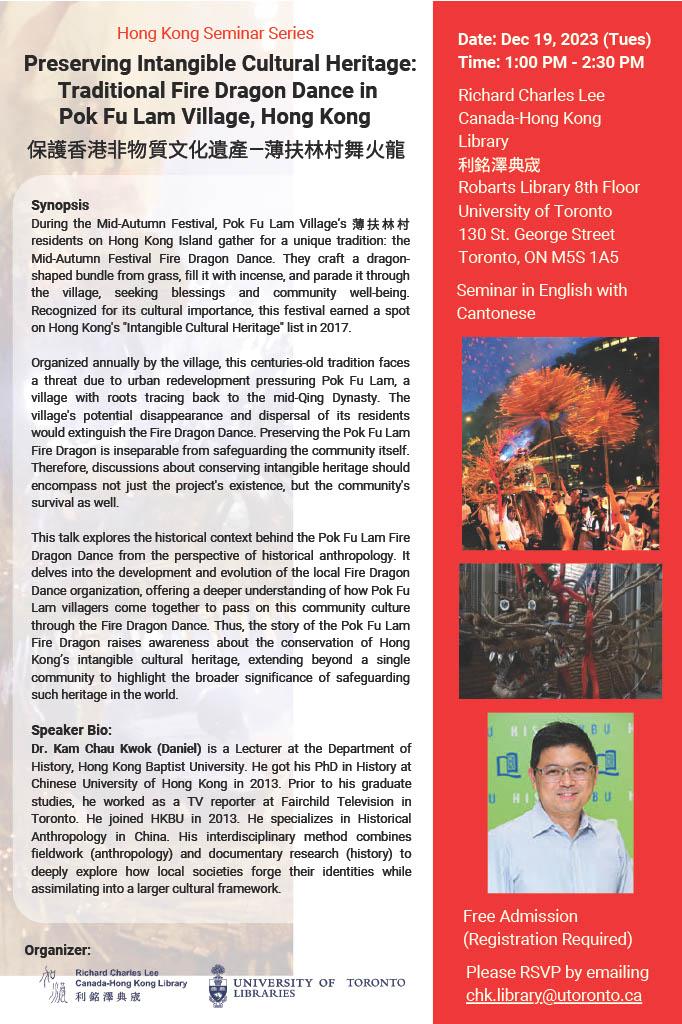
The seminar will be in English with Cantonese.
Free admission. Please RSVP by emailing chk.library@utoronto.ca.
Synopsis
During the Mid-Autumn Festival, Pok Fu Lam Village‘s 薄扶林村 residents on Hong Kong Island gather for a unique tradition: the Mid-Autumn Festival Fire Dragon Dance. They craft a dragon-shaped bundle from grass, fill it with incense, and parade it through the village, seeking blessings and community well-being. Recognized for its cultural importance, this festival earned a spot on Hong Kong's "Intangible Cultural Heritage" list in 2017.
Organized annually by the village, this centuries-old tradition faces a threat due to urban redevelopment pressuring Pok Fu Lam, a village with roots tracing back to the mid-Qing Dynasty. The village's potential disappearance and dispersal of its residents would extinguish the Fire Dragon Dance. Preserving the Pok Fu Lam Fire Dragon is inseparable from safeguarding the community itself. Therefore, discussions about conserving intangible heritage should encompass not just the project's existence, but the community's survival as well.
This talk explores the historical context behind the Pok Fu Lam Fire Dragon Dance from the perspective of historical anthropology. It delves into the development and evolution of the local Fire Dragon Dance organization, offering a deeper understanding of how Pok Fu Lam villagers come together to pass on this community culture through the Fire Dragon Dance. Thus, the story of the Pok Fu Lam Fire Dragon raises awareness about the conservation of Hong Kong’s intangible cultural heritage, extending beyond a single community to highlight the broader significance of safeguarding such heritage in the world.
Speaker Bio:
Dr. Kam Chau Kwok (Daniel) is a Lecturer at the Department of History, Hong Kong Baptist University. He got his PhD in History at Chinese University of Hong Kong in 2013. Prior to his graduate studies, he worked as a TV reporter at Fairchild Television in Toronto. He joined HKBU in 2013. He specializes in Historical Anthropology in China. His interdisciplinary method combines fieldwork (anthropology) and documentary research (history) to deeply explore how local societies forge their identities while assimilating into a larger cultural framework.